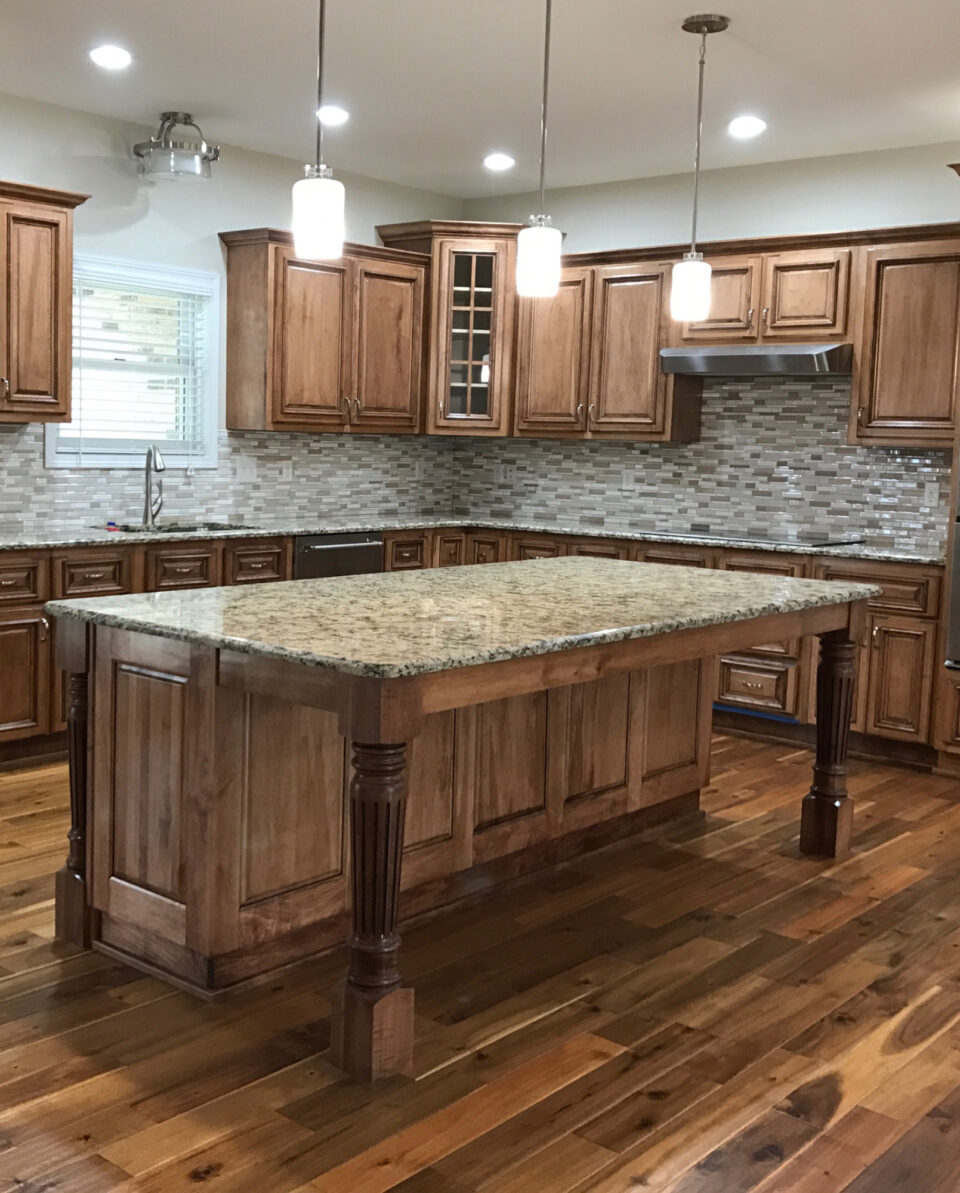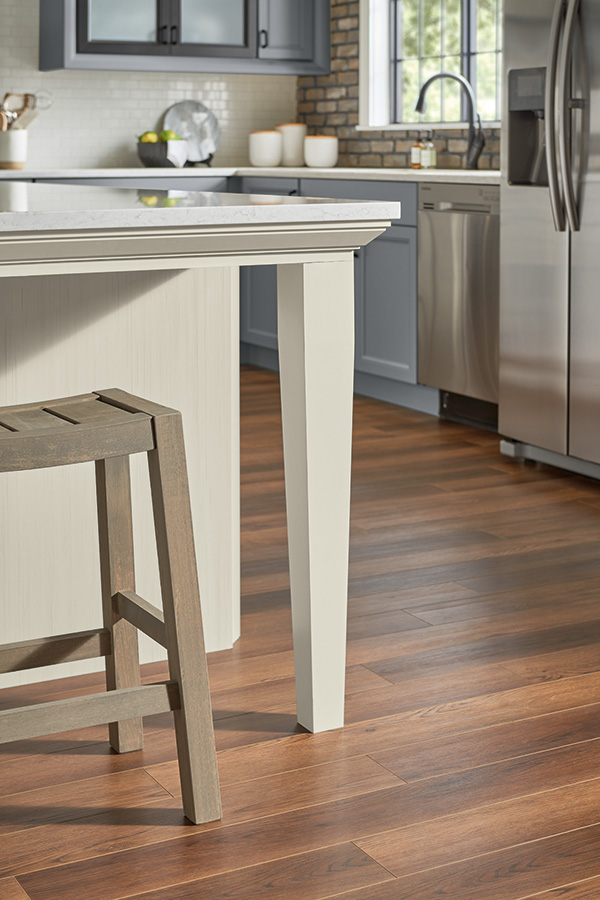Stylish Kitchen Island Leg Concepts to Raise Your Kitchen Decor
Wiki Article
Discovering the Important Features of a Kitchen Area Island Leg for Your Culinary Area
The cooking area island offers as a main center in any culinary space, and the option of leg layout is crucial in enhancing both its performance and visual charm. Understanding the crucial features of kitchen area island legs-- consisting of material choices, layout styles, and stability factors-- can significantly affect the general experience within the cooking area.Importance of Kitchen Area Island Legs
Kitchen area island legs play a crucial function in both the performance and aesthetic appeals of a cooking area area. They not just support the weight of the island but also enhance the total layout, adding to the cooking area's aesthetic charm. The option of legs can determine the design of the kitchen area, be it contemporary, typical, or rustic.Functionally, robust and correctly developed legs guarantee security, permitting the risk-free usage of the island for numerous jobs such as cooking, eating, or enjoyable. Strong legs avoid wobbling and moving, supplying a trusted surface area for day-to-day activities.
Additionally, the elevation and placement of the legs can affect the comfort degree for those seated at the island. A well-considered elevation can accommodate bar feceses or chairs, advertising a welcoming atmosphere for events.
Along with these sensible factors to consider, cooking area island legs can act as a centerpiece in the room (kitchen island leg). Decorative or distinctively designed legs can elevate the design visual, making the island a focal point. Thus, selecting the appropriate cooking area island legs is vital for stabilizing kind and function in any cooking area
Product Options for Legs
Choosing the suitable product for kitchen island legs substantially influences both longevity and layout. Common product alternatives include steel, rock, and timber, each offering distinct advantages.Wood is a preferred selection as a result of its heat and convenience. It can be quickly tailored to match different style styles, from rustic to modern. Hardwoods like oak and maple provide exceptional stamina and durability, while softer timbers can be more prone to tear and wear.
Metal legs are favored for their sleek, modern-day visual. kitchen island leg. Stainless-steel and aluminum are not only durable but likewise immune to corrosion and rust, making them perfect for kitchen area settings. They can produce an industrial appearance and are typically available in numerous coatings to match other kitchen area aspects
Rock legs, such as granite or marble, add a component of high-end and stability. While heavier than other products, they use outstanding longevity and can stand up to substantial weight. They might need extra assistance to guarantee proper balance.
Eventually, the option of product ought to align with both useful demands and the general design vision of the kitchen area space, guaranteeing that the island legs boost both utility and looks.
Design Styles to Think About
What design styles should be taken into consideration when choosing legs for a cooking area island? The option of leg style dramatically influences the general visual of your culinary space. For a contemporary kitchen area, streamlined and minimalistic leg designs, such as stainless steel or geometric shapes, can boost the modern-day charm, giving a clean and minimalist look.On the other hand, traditional kitchens gain from traditional designs such as transformed or carved wood legs, which include heat and character. These alternatives often include complex details that complement vintage furnishings. For a rustic atmosphere, take into consideration legs made from reclaimed timber or wrought iron, which bring a natural, natural high quality to the room.
If you lean in the direction of an industrial style, durable steel legs with a distressed finish may be perfect, providing an edgy yet sophisticated touch. In addition, farmhouse design internet kitchens can incorporate chunky legs that evoke a feeling of sturdiness and homeliness.

Elevation and Security Aspects
The height and stability of a kitchen area island are critical elements that straight affect its capability and customer experience. A suitable kitchen island leg ought to offer sufficient elevation to suit a selection of tasks, from food prep work to laid-back eating. Generally, kitchen islands stand in between 36 to 42 inches high, straightening with basic counter and bar elevations. This range ensures convenience for individuals while performing various activities, therefore enhancing the general use of the room.Security is just as crucial, especially as kitchen islands frequently work as centerpieces in cooking settings. A stable leg style reduces tottering and moving, which can cause accidents or pain throughout usage. Materials such as strong wood, metal, or a combination thereof are frequently employed to achieve the needed sturdiness. In addition, the leg's attachment to the island's base have to be protected, ensuring long life and durability versus the damage of daily usage.
Personalization and Accessories
Modification options and devices for kitchen area island legs can substantially improve both the visual charm and functionality of the room. Homeowners can choose from a range of products, consisting of stone, wood, and steel, permitting seamless integration with existing kitchen area style. The choice of coating-- be it a natural stain, paint, or powder covering-- more customizes the look, ensuring that the island complements the overall design theme.Along with material and finish, property owners may likewise check out the unification of accessories such as attractive braces, flexible feet, or incorporated shelving. Brackets can supply added assistance while adding to a contemporary or rustic visual. Flexible feet are especially beneficial for uneven flooring, ensuring the island stays stable and degree, which is essential for both security and functionality.

Final Thought
In original site verdict, cooking area island legs serve a crucial role in supplying security and improving the general aesthetic of the cooking area. The option of materials and layout styles contributes to both capability and visual charm, while considerations of height and stability ensure functional use. Customization alternatives and devices can raise the kitchen island, making it a distinct focal factor within the home. Therefore, cautious consideration of these functions is essential for an efficient cooking area style.The kitchen island offers as a central hub in any type of culinary room, and the option of leg layout is critical in enhancing both its functionality and aesthetic allure. Comprehending the important functions of cooking area island legs-- consisting of product choices, style styles, and stability aspects-- can significantly impact the total experience within the kitchen.Kitchen area island legs play an important function in both the capability and aesthetics of a kitchen area area.What design styles should be thought about when picking legs for a cooking area island?In final thought, cooking area island legs offer an important function in supplying stability and enhancing the total aesthetic of the culinary area.
Report this wiki page